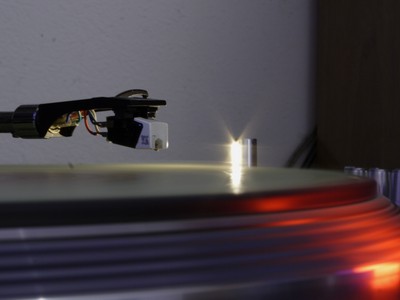
Turntable cartridges are one of the most important parts of a stereo system, if not the most important part. A lot of emphasis is placed on the quality of a turntable, but in many systems, the quality of sound is limited by the cartridge. When it comes to upgrading sound, cartridges provide relatively inexpensive options for creating a vastly improved sound.
Cheap cartridges are probably best classified as $50 or less, and with turntable cartridges you pretty much get what you pay for. Over a hundred dollars is where the best value is, with many options available that will suit all but the most hardcore audiophile. As is typical of audiophile equipment, cartridges can cost well over one thousand dollars, which you should stay away from unless you’re staggeringly rich and have supersonic hearing.
Many turntable come with fitted turntable cartridges. A peculiarity of turntables is the more you pay for one, the less likely a turntable cartridge will be included. The more expensive you go, the more likely other parts will start disappearing, such as tonearms. Not to worry – many of the included turntable cartridges for new turntables lack a little anyway. Even the included Rega cartridges at the lower end of their Planar range can be replaced for a decent improvement in sound.
During the 70s and 80s, turntables and turntable cartridges were regarded as completely different things and sold as such. Not so any longer, as turntables are intended to come as a all in one packages that include preamp, cartridge and speaker in some situations. Cheaper turntables, whether vintage or new, won’t particularly benefit from an excellent cartridge. Audio systems can bottleneck at any point (amplifier, speakers, turntable or cartridge) so there’s no point upgrading voraciously. Just make sure the bottleneck is not the cartridge, as many budding audiophiles tend to neglect this for some reason.
Anatomy of Turntable Cartridges
All turntable cartridges contain a needle (stylus), cantilever and a transducer. The stylus’ role is to track the grooves of the record, which in turn cause it to vibrate. The cantilever then communicates these vibrations to the transducer, which translates the vibration in to an electrical current.
The two most common forms of cartridges are moving magnet (MM) and moving coil (MC). With moving magnet cartridges, the cantilever vibrates a magnet, creating voltage and when processed by your amplifier: sound. Moving coil cartridges do something very similar, but instead of vibrating the magnet directly the cantilever vibrates a copper coil around the magnet. If you already own a receiver, be sure to check whether it is intended for MC or MM cartridges – it will say so in the manual. Generally, audiophiles prefer moving coil turntable cartridges, but there are definitely some great moving magnet options available, so each cartridge should be judged on its own merit rather than being prematurely ignored due to its type.
What Characteristics Do Good Turntable Cartridges Have?
Turntable cartridges should track a record faithfully. A good cartridge combined with a good stylus will hug the grooves of a record, reproducing minute details and making the listener realise there are parts of the music he or she had not previously heard. Inaudible becomes audible. All parts of a particularly complex arrangement, such as that of an orchestra, are heard clearly. Notes played during busy passages by a soloist are heard distinctly rather than blurred.
Frequency response is a piece of technical data that alludes to the quality of a turntable cartridge. Good cartridges will exhibit close to a ‘linear frequency response’, whereby the lowest to the highest notes are played at very close to the same volume. Inferior turntable cartridges often have noticeable ‘spikes’ or ‘shelves’ were the music becomes louder at a particular frequency, which can unbalance a piece of music. Another piece of technical data is channel separation, or the ability to separate the two stereo channels throughout the range of frequencies.
Cheap cartridges can be recognised by the harshness of their sound. Over long periods of listening the listener may become tired or may begin to recognise repeated parts of the music that are distorted, thereby negatively affecting the listening experience.
Different turntable cartridges have particular sound qualities, and will therefore please each ear differently. Wherever possible, turntable cartridges should be listened to before being purchased, as with any piece of audio equipment.
